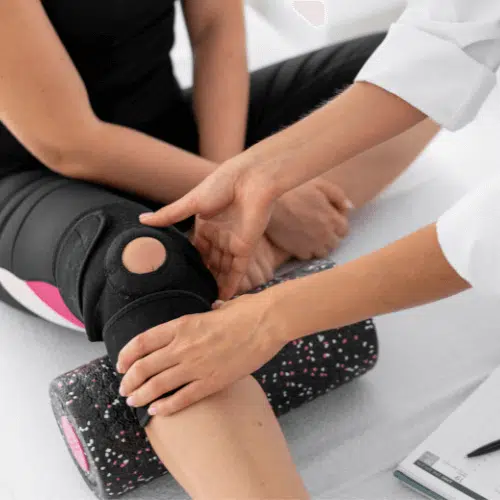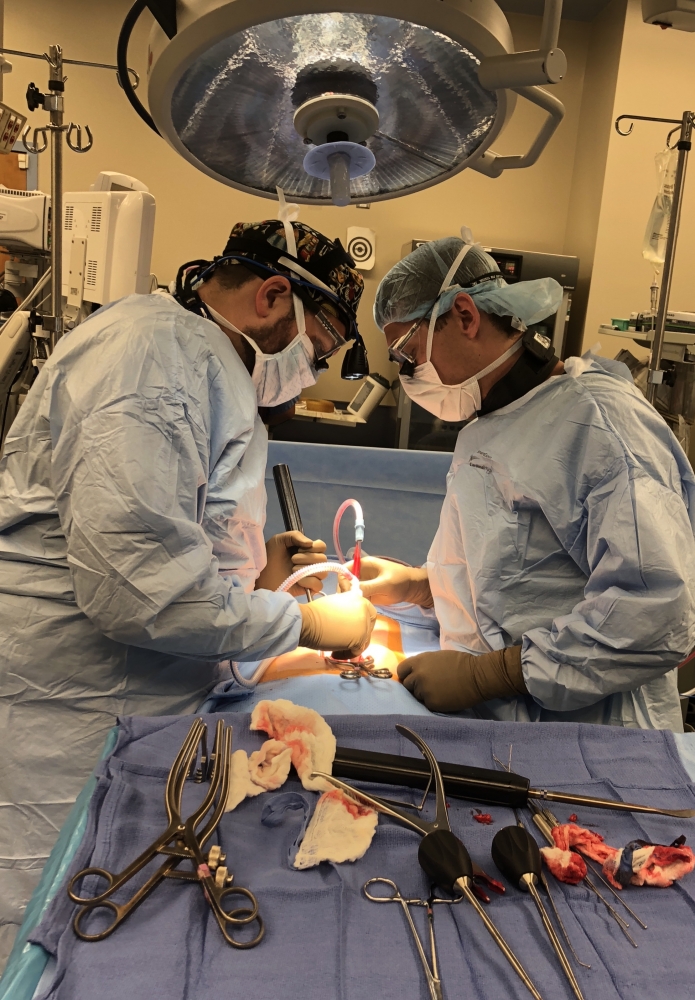Recognizing the Usual Spinal Column Issues That May Require Surgical Treatment
Problems such as herniated discs, spine stenosis, and degenerative disc condition not only affect mobility yet can likewise considerably impair top quality of life. As we check out the various problems and their ramifications, it comes to be obvious that the decision-making process bordering medical intervention is intricate and diverse, increasing important inquiries about timing, risks, and results.
Herniated Discs
Herniated discs are a common back condition, commonly resulting from age-related deterioration or severe injury. best spine surgeons in st louis mo. This problem occurs when the soft internal product of a spinal disc extends via its outer layer, potentially pressing adjacent nerves. The resulting signs can consist of local pain, tingling, prickling, or weakness in the limbs, depending upon the damaged area of the spinal column
Medical diagnosis generally includes a thorough clinical background and physical evaluation, usually supplemented by imaging studies such as MRI or CT scans. These diagnostic devices permit healthcare professionals to examine the level of the herniation and its influence on surrounding frameworks.
Therapy alternatives for herniated discs range from conventional measures, such as physical therapy and medicine, to even more intrusive treatments. Numerous individuals discover alleviation via non-surgical approaches, which concentrate on discomfort monitoring and restoring function. Nevertheless, when traditional therapies fall short to reduce signs or when neurological deficiencies arise, surgical intervention may be required.
Surgical alternatives, consisting of discectomy or spine combination, goal to eliminate stress on the damaged nerves and recover back stability. The decision to seek surgery is typically made after mindful factor to consider of the individual's general health, severity of signs and symptoms, and action to previous treatments.
Spinal Constriction

Signs and symptoms commonly intensify with tasks that need prolonged standing or strolling, causing a condition referred to as neurogenic claudication. Medical diagnosis commonly includes imaging research studies, such as MRI or CT scans, which help envision the degree of stenosis and determine impacted areas.
Treatment choices for back constriction may start conservatively, using physical treatment, discomfort monitoring approaches, and lifestyle modifications. Surgical interventions, such as decompression laminectomy or spinal fusion, objective to relieve pressure on the spine cable and nerves, therefore easing discomfort and bring back function.
Scoliosis
A significant number of individuals are impacted by scoliosis, a problem defined by an uncommon side curvature of the back (best spine surgeons in st louis mo). This curvature can establish in different types, including idiopathic scoliosis, which develops without a recognized cause, or as a result of neuromuscular conditions, genetic factors, or degenerative conditions. The severity of scoliosis can vary considerably, ranging from mild curves that may not need therapy to serious situations that can cause discomfort, respiratory problems, and reduced lifestyle
Non-surgical interventions include monitoring, bracing, and physical therapy. Surgical treatment may become needed for patients with significant curvature that is aggravating, or for those experiencing debilitating signs and symptoms. Surgical choices commonly involve spine fusion, which aims to fix the curvature and stabilize the back.

Degenerative Disc Condition

DDD is frequently a result of the all-natural aging process, yet aspects such as genetics, way of living, and repeated strain can increase its beginning. Patients regularly report localized discomfort in the lower back or neck, which might radiate to various other areas, such as the arm or legs. In serious cases, nerve compression can cause neurological signs, consisting of pins and needles, tingling, or weak point.
While conservative therapies, such as physical treatment and pain monitoring, can minimize symptoms for several individuals, some might require surgical treatment. Surgical options, such as spine blend or man-made disc replacement, objective to recover stability and ease pain by attending to the underlying issues brought on by DDD. A thorough examination by a spine expert is necessary to identify one of the most appropriate treatment strategy.
Fractured Spinal Column
Broken vertebrae stand for a considerable problem in spine health and wellness, usually resulting from injury, weakening of bones, or other degenerative conditions (best spine surgeons in st louis mo). These fractures can cause extreme pain, loss of movement, and prospective difficulties such as back instability or neurological deficits. The system of injury normally involves either direct trauma, such as falls or automobile crashes, or the steady weakening of bones due to conditions like osteoporosis
Medical diagnosis is usually confirmed through imaging studies, including X-rays, CT scans, or MRIs, which expose the degree and sort of crack. Therapy alternatives differ relying on the crack's seriousness and the individual's total health. Conservative administration might involve pain alleviation, remainder, and physical treatment; however, surgical intervention may be needed for displaced fractures, those triggering spine instability, or when traditional measures fall short.
Surgical approaches can consist of vertebroplasty or kyphoplasty, procedures intended at maintaining the vertebra and alleviating discomfort. In extra extreme instances, back blend might be indicated to restore structural honesty. Prompt and ideal intervention is essential in ensuring optimal recuperation and decreasing long-lasting issues related to fractured vertebrae.

Final Thought
In summary, usual spinal column problems such as herniated discs, back constriction, scoliosis, degenerative disc condition, and fractured vertebrae can significantly harm high quality of life and necessitate medical intervention. While traditional treatments might supply relief oftentimes, relentless or serious signs and symptoms commonly require medical options to bring back feature and minimize discomfort. Timely medical diagnosis and appropriate administration are necessary to improve patient results and facilitate healing in people influenced by these incapacitating problems.
Back stenosis is a condition identified by the constricting of the spinal canal, which can lead resource to compression of the spine cable and nerve roots. Surgical interventions, such as decompression laminectomy or back blend, objective to soothe pressure on the spine cable and nerves, thereby easing discomfort and restoring function. Surgical choices, such as back fusion or man-made disc substitute, aim to bring back security and relieve pain by dealing with the underlying problems created by DDD. Conservative administration might include discomfort alleviation, remainder, and physical therapy; nevertheless, medical intervention may be needed for displaced cracks, those causing spinal click to read instability, or when conservative procedures stop working.
In recap, usual spine issues such as herniated discs, spine constriction, scoliosis, degenerative disc condition, and broken vertebrae can significantly impair quality of life and necessitate medical treatment.